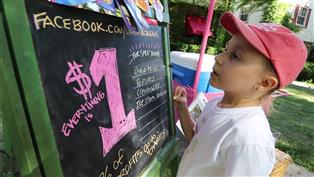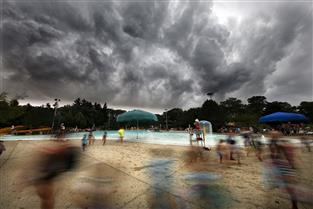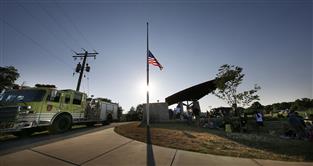A proposal to allow residents to request and fund traffic calming measures on their blocks faced a barrage of concerns Tuesday from the Community Development Committee about whether it would be effective or just move the problem, possibly favoring the rich.
"I am concerned if we are putting the cost of this on citizens, I don't want wealthier blocks to have more speed bumps, and it seems to me that will be the indirect effect of this policy," Alderwoman Allison Byrne said. "I have a problem with that."
Public Works Director Bill Porter drafted the proposed policy based on concerns from the Traffic and Safety Committee that stop signs weren't a solution for every block's traffic problems. Members thought some streets might benefit from other traffic calming measures, such as speed tables and bumps, roundabouts, medians, monument signs and bump-outs.
In a pilot program funded by the Department of Transportation last year, Porter said speed tables proved to be effective at 103rd, 104th and 106th streets between Bluemound Road and Wisconsin Avenue. Maximum speeds were reduced in some areas from around 60 miles per hour to around 40.
Porter modeled the draft policy on Milwaukee's, which assesses 90 percent of the implementation costs on residents directly affected. Wauwatosa's proposal puts 100 percent of the cost on affected property because the city doesn't have a budget for such measures. However, the city would absorb some costs associated with the projects, like getting out information, holding meetings, assessing need at sites in question and forming a plan.
In addition to questioning the funding aspect, committee members questioned whether the city needs more tools than it already uses, like policing and speed-reading kiosks.
"My concern with this is we enable poor drivers to be poor drivers, and maybe (they would) be a poor driver on a different street because there's a speed table on this one," Alderwoman Cheryl Berdan said. "I would rather teach people not to do that than just move them somewhere else."
Byrne was also worried about it being too easy for residents to initiate the process for a traffic study, which would use city staff time. The draft policy requires 50 percent of residents on impacted blocks to sign a petition to get a study. Porter also thought it was too low a threshold, but was following previous direction from the Traffic and Safety Committee.
"My sense is there's a reluctance to adopt something at this point," Porter said.
But committee members weren't ready to scrap the plan. Porter said he would come back to the committee with more information on how such policies have played out in other communities. If the committee approves a policy, staff would have to draft an ordinance to incorporate it into the municipal code.
More from News and Features
- Anodyne Coffee plans to open location in Wauwatosa Village
- Wauwatosa Meetings: Aug. 4
- Video: Wauwatosa girl's curbside ice cream stand raises money for the hungry
- Wauwatosa News and Notes: Hands-only CPR training offered; Firefly Art Fair is Aug. 6-7
- Wauwatosa Ask Now: Why are there barriers and fencing along the North Avenue bridges over the Menomonee River?
- Mystery Photo Contest: July 28
- Wauwatosa gears up for National Night Out event, this year at the zoo
- Election 2016: Wisconsin's 4th District candidates weigh in
- Wauwatosa's Luther Manor residents share smiles through flower delivery
- Wauwatosa Police Report: July 17-23














